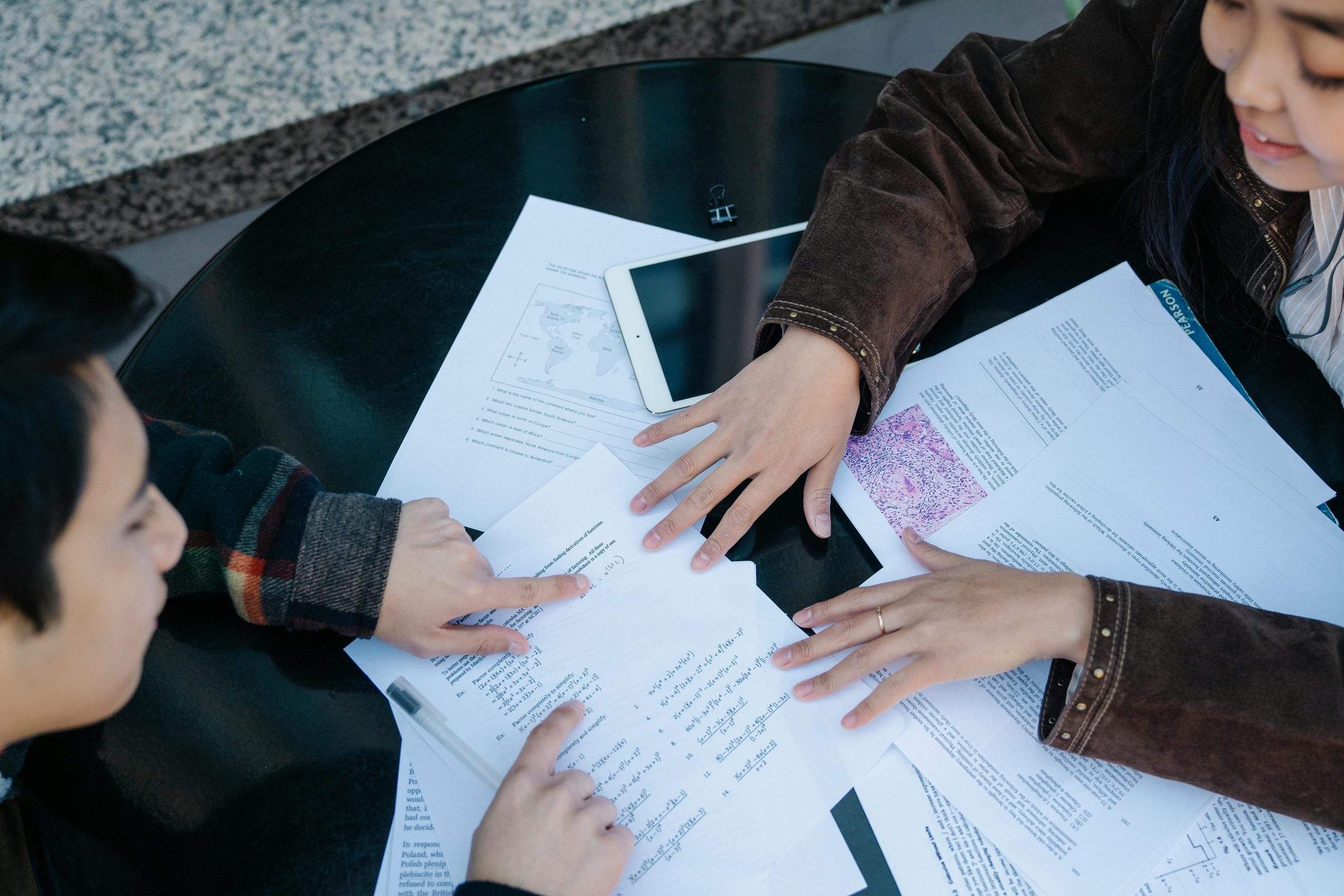5.6 Wo lernst du?

Guten Tag!
Zum Aufwärmen machen wir unseren Tagesminiplausch und eine Wiederholung.
Wiederholung
In the previous lesson, you learned the difference between studieren and lernen, and how to say when you study. Let’s review what you have learned.
Wann (an welchen Tagen) lernst du was (welche Fächer) ? When (on which days) do study which subjects? Make a note of the subjects you study and when you study them in your written journal. (Note that the verb in the question is lernen, so your answers should only have lernen.)
Lektionsüberblick
In this lesson, we will continue to expand on your ability to talk about your studies. This lesson will focus on where you study for class. In the end, you will be able to 1) name some studying locations and 2) say where you study for class.
1) Wo lernst du?
You have worked with the question word Wo before. Recall what it means in German (Hint: It’s a bit of a false friend).
Wo is about location, location, location. Let’s look at possible answers to the question: Wo lernst du?
| Ich lerne in der Bibliothek. |  |
 |
Ich lerne zu Hause. |
| Ich lerne bei einem Freund. |  |
 |
Ich lerne bei einer Freundin. |
| Ich lerne in einem Café. |  |
 |
Ich lerne in einem Park. |
Let’s practice.
Jetzt bist du dran!
2) Ich lerne in/bei…
Look again at the example sentences from above. What do you notice about the little words leading up to the location given?
Ich lerne in der Bibliothek/in einem Café/in einem Park.
Ich lerne bei einem Freund/bei einer Freundin.
Ich lerne zu Hause.
As you may have noticed, there are three different ways to say “at” in German. Can you tell when to use each one? What do the locations in each line have in common with each other?
| Ich lerne in der Bibliothek. Ich lerne in einem Café. Ich lerne in einem Park. |
I study at the library. I study at a cafe. I study at/in a park |
Locations not connected to friends/family.
|
| Ich lerne bei einem Freund. Ich lerne bei einer Freundin. |
I study at a friend’s (house).
|
It is never correct to say house. The bei einem Freund already makes it clear that you are at the person’s house. |
| Ich lerne zu Hause. | I study at home. | zu Hause = at home -> this is an idiomatic expression. There are no other instances of at = zu. |
Using these sentences as guides, complete the following activity for practice.
Jetzt bist du dran!
Österreichische Nationalbibliothek im Blickpunkt
 Österreichische Nationalbibliothek wurde 1368 als kaiserliche Hofbibliothek der Familie Habsburg gegründet und ist seit 1726 in der Neuen Burg am Heldenplatz in Wien (links). Die Bibliothek hat mehr als 12 Millionen Objekte, davon sind 4 Millionen Bücher. 695 davon sind Globen – die weltweit größte Sammlung von Globen. Wenn man die Bibliothek besucht, muss man Jacken und Taschen in einem Spind einschließen.
Österreichische Nationalbibliothek wurde 1368 als kaiserliche Hofbibliothek der Familie Habsburg gegründet und ist seit 1726 in der Neuen Burg am Heldenplatz in Wien (links). Die Bibliothek hat mehr als 12 Millionen Objekte, davon sind 4 Millionen Bücher. 695 davon sind Globen – die weltweit größte Sammlung von Globen. Wenn man die Bibliothek besucht, muss man Jacken und Taschen in einem Spind einschließen.  Wenn man Sachen (wie Laptop, Bleistifte und Papier, usw.) mitnehmen will, packt man sie in einen von der Bibliothek gestellten durchsichtigen Plastikbeutel (damit der Inhalt gesehen werden kann). Man darf weder Essen noch Trinken mitbringen. Wenn man von seinem Platz im Lesesaal (links unten) weggehen muss und ihn nicht verlieren will, legt man eine Parkscheibe hin (siehe rechts) und gibt an, wann man gegangen ist.
Wenn man Sachen (wie Laptop, Bleistifte und Papier, usw.) mitnehmen will, packt man sie in einen von der Bibliothek gestellten durchsichtigen Plastikbeutel (damit der Inhalt gesehen werden kann). Man darf weder Essen noch Trinken mitbringen. Wenn man von seinem Platz im Lesesaal (links unten) weggehen muss und ihn nicht verlieren will, legt man eine Parkscheibe hin (siehe rechts) und gibt an, wann man gegangen ist.

The Österreichiche Nationalbibliothek (National Library of Austria) was first founded in 1368 as the Imperial Court Library of the Habsburg Family and has been located in the Neuen Burg building (left) on Heldenplatz (Heroes’ Square) since 1726. The library has more than 12 million items, 4 million of them are books. 695 of them are globes – the world’s largest collection of historical globes. When visiting the library, you are usually required to place jackets and bags into lockers. If you want to take things with you (such as your laptop, pencil and paper, etc), then you must put them into a transparent plastic bag provided by the library (so that the contents can be seen). Food and drinks are also strictly prohibited. If you need to step away from you seat in the reading room (bottom left) but do not want to lose your spot, you need to use a Parkscheibe (right) set to the time you left.
Zum Schluß

*As you conclude this lesson, don’t forget to check Canvas!*

Media Attributions
- Private: 1010-at-banner-large
- Photo of woman in cafe by pexels-mutecevvil-17564434
- Wien Nationalbibliothek von aussen
- Wien Parkscheibe Bibliothek

